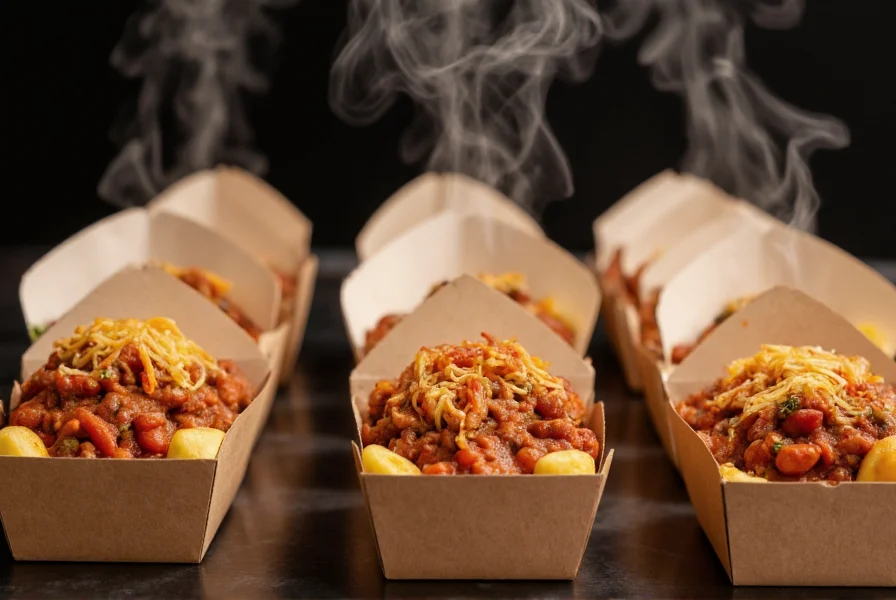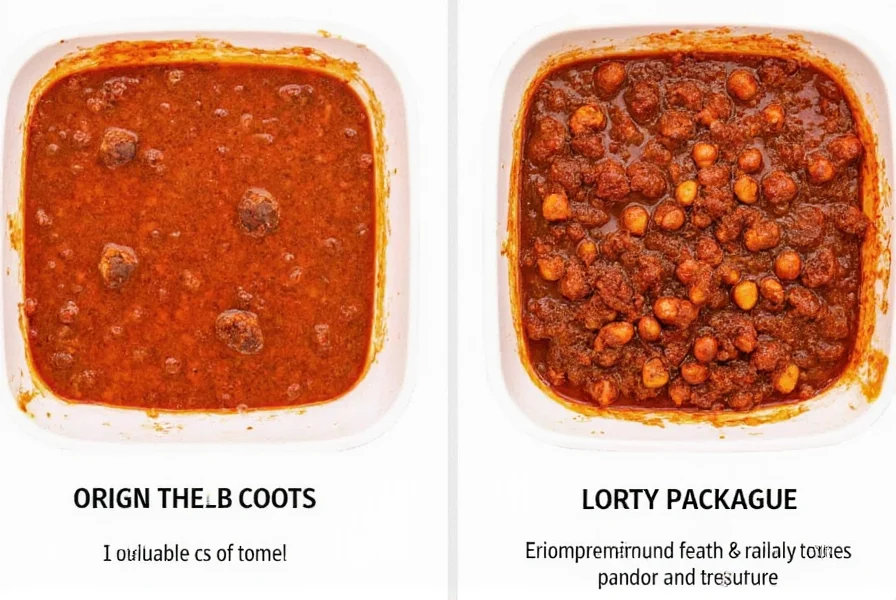When ordering chili for takeout, understanding which varieties travel well can make the difference between a satisfying meal and a disappointing experience. Unlike dine-in options where chili is served immediately, takeout requires specific considerations for texture, temperature stability, and container compatibility.
Why Some Chili Varieties Excel for Takeout
Not all chili recipes translate well to the takeout experience. The journey from restaurant kitchen to your table introduces variables that can compromise quality. Successful takeout chili must withstand temperature changes, maintain structural integrity, and deliver consistent flavor despite travel time.
Key Characteristics of Ideal Takeout Chili
Certain qualities determine whether a chili will arrive in optimal condition. These factors help explain why some restaurants' chili takeout consistently outperforms others.
| Characteristic | Why It Matters | Best Practices |
|---|---|---|
| Consistency | Prevents separation during transport | Thicker texture with minimal liquid content |
| Temperature Stability | Maintains safe eating temperature | Hearty ingredients that retain heat longer |
| Flavor Integrity | Prevents flavor degradation | Well-developed flavors that intensify rather than diminish |
| Container Compatibility | Ensures proper packaging | Works well with standard takeout containers without leakage |
Top Chili Varieties for Takeout Service
Based on extensive culinary experience with takeout food logistics, certain chili styles consistently deliver superior results when ordered for takeout.
Texas-Style Beef Chili
This meat-forward variety without beans represents one of the best options for takeout. The rich meat content creates a naturally thick consistency that resists separation during transport. Properly prepared Texas chili maintains its integrity even with 30-45 minutes of travel time, making it ideal for chili takeout temperature guidelines compliance.
Three-Bean Vegetarian Chili
For plant-based options, a well-constructed three-bean chili with kidney, black, and pinto beans offers excellent takeout performance. The combination creates a hearty texture that holds together during transport. Restaurants preparing best vegetarian chili for takeout typically reduce additional liquid content slightly to prevent sogginess upon arrival.
Cincinnati-Style Chili
While traditionally served over spaghetti, Cincinnati-style chili's unique spice profile and moderate thickness make it surprisingly resilient for takeout. The key is proper portioning—separating the chili from the spaghetti until serving prevents noodle absorption issues. This represents one of the better types of chili that travel well despite its regional specialty status.

What to Look for When Ordering Chili Takeout
Discerning customers can identify quality chili takeout options by observing several key indicators before placing their order.
Packaging Quality Indicators
Quality establishments use containers specifically designed for hot, liquid-containing foods. Look for:
- Leak-proof, rigid containers with secure locking mechanisms
- Separate compartments for toppings and accompaniments
- Insulated bags or thermal sleeves for extended delivery distances
- Clear labeling of ingredients and reheating instructions
Temperature Management Practices
Proper temperature control represents one of the most critical aspects of successful chili takeout. Restaurants following chili takeout temperature guidelines will:
- Pack chili at optimal serving temperature (165°F/74°C minimum)
- Use pre-heated containers to maintain temperature
- Provide insulated packaging for deliveries exceeding 15 minutes
- Offer reheating instructions for optimal flavor restoration
Common Takeout Chili Problems and Solutions
Even with careful preparation, certain issues can arise with chili takeout. Understanding these challenges helps customers make informed choices and provides restaurants with improvement opportunities.
Texture Separation During Transport
Fat and liquid separation represents the most common issue with chili takeout. High-quality establishments address this by:
- Allowing chili to rest after cooking to stabilize emulsions
- Using natural thickeners like masa harina rather than flour
- Providing clear instructions to stir thoroughly before serving
Maintaining Heat During Delivery
Keeping chili at proper serving temperature requires specific techniques. The best chili for takeout containers incorporates ingredients that naturally retain heat longer. Restaurants committed to quality takeout will often:
- Use thermal containers for immediate packing
- Time cooking to coincide with order preparation
- Offer delivery radius limitations based on temperature retention studies
- Provide microwave-safe containers with precise reheating instructions

Maximizing Your Chili Takeout Experience
Customers can take specific steps to ensure they receive the best possible chili takeout experience. These practical tips address common pain points while enhancing overall satisfaction.
Order Timing Considerations
Strategic ordering times significantly impact quality. For optimal results:
- Order during off-peak hours when kitchens can dedicate proper attention
- Choose pickup over delivery when possible to minimize temperature loss
- Ask about preparation time to coordinate with your intended consumption time
Proper Handling Upon Receipt
How you handle chili immediately after receiving it affects the final eating experience. Follow these guidelines for how to keep chili hot during delivery:
- Transfer to a pre-warmed serving dish immediately upon arrival
- Stir thoroughly to redistribute separated elements
- Consume within 30 minutes of receipt for optimal texture and flavor
- Store leftovers properly to maintain quality for subsequent meals
What type of chili travels best for takeout?
Meat-based chilies like Texas-style beef chili and hearty bean varieties travel best for takeout due to their thicker consistency and superior temperature retention properties. These styles maintain texture integrity during transport better than watery or delicate preparations.
How can I tell if a restaurant serves good chili takeout?
Look for restaurants using rigid, leak-proof containers with secure closures, separate compartments for toppings, and thermal packaging. Quality establishments also provide clear reheating instructions and maintain proper food safety temperatures during transport.
What temperature should chili takeout maintain during delivery?
Chili takeout should maintain a minimum internal temperature of 140°F (60°C) during delivery to remain safe for consumption. High-quality providers use thermal containers and time their preparation to ensure chili stays within the safe temperature zone until consumption.
Why does my takeout chili sometimes arrive separated?
Chili separation occurs when fat and liquid components separate during transport, often due to improper resting time after cooking or excessive liquid content. Quality restaurants address this by allowing proper settling time, using natural thickeners, and providing clear 'stir before serving' instructions.
Can vegetarian chili work well for takeout?
Yes, well-prepared vegetarian chili can excel for takeout. Three-bean varieties with kidney, black, and pinto beans create a hearty texture that holds together during transport. Restaurants specializing in the best vegetarian chili for takeout typically reduce additional liquid content slightly to prevent sogginess upon arrival.











 浙公网安备
33010002000092号
浙公网安备
33010002000092号 浙B2-20120091-4
浙B2-20120091-4